What Is ALICE?
ALICE is an acronym for Asset Limited, Income Constrained, Employed — households that earn more than the Federal Poverty Level, but less than the basic cost of living for the county. “ALICE” refers to the working poor—families who have jobs but still don’t earn enough to cover their basic needs like housing, childcare, food, transportation, healthcare, and technology. These workers often face challenges in keeping their own households afloat while also helping to support our local communities.
Why This Work Matters
This project raises awareness about a huge but hidden segment of our community that is struggling to afford basic necessities. The success of a community is directly related to the financial stability of its members.
Rent or electric bill? Food or prescription drug? For too many hardworking households, impossible decisions such as these are a way of life. When ALICE is forced to make difficult choices, the entire community faces consequences. The ALICE research helps stakeholders to reassess public and corporate policies and implement changes that improve the lives of ALICE and their communities.
Don’t Have First-Hand Experience With Poverty But Want to Better Understand?
Take the ALICE simulator to experience the decisions faced by many Story County residents each month.
Learn more at: unitedforalice.org/overview
2023 ALICE in the Crosscurrents: COVID and Financial Hardship in Iowa Findings
The following information presents the latest ALICE findings for Story County and Iowa. This important research is sponsored by the United Ways of Iowa and the Green State Foundation, highlighting the challenges faced by working families in our communities.
Of Story County’s 38,868 households in 2021:
-
22% earned below the federal poverty level (FPL). This is double the state average.
-
17% were ALICE, in households that earned above the FPL but not enough to afford the basics.
-
Together, 39% of the households in Story County were below the ALICE threshold (poverty + ALICE divided by total households).
-
Since the last point-in-time check (2019), both households in poverty and ALICE households have increased in Story County.
As in Iowa and the USA, financial hardship is not equally distributed. For example:
-
76% of all single-female-headed households with children in Story County were below the ALICE threshold (compared to 41% of all single-male -headed children or 7% of married households with children)
-
47% all households in zip code 50278 (Zearing and area) and 48% of all households in zip code 50014 (west Ames and area) were below the ALICE threshold (compared to 16% in zip code 50124/ Huxley)
-
67% of all Black households in Story County earned below the ALICE threshold (compared to 36%of all white households or 39% of all households)
See more Story County data here. (Choose “Story County” in the drop-down menu.)
Of Iowa's 1,293,028 households in 2021:
-
11% earned below the Federal Poverty Level (FPL)
-
24% were ALICE, in households that earned above the FPL but not enough to afford the basics in the communities where they live
-
Together, 36% of households in Iowa were below the ALICE Threshold (poverty + ALICE divided by total households)
Other findings in Iowa:
-
ALICE lives in every Iowa community, though percentages vary. For example, in Dickinson County in northern Iowa, 25% of the population is either in poverty or earning below the ALICE threshold, whereas in some southern counties – such as Appanoose County – 47% of the population is below these thresholds. Learn more here.
-
ALICE households are diverse, but financial hardship is not equally distributed. Learn more here.
-
ALICE works hard, but it’s not enough. A key contributor to the number of ALICE households in Iowa is the fundamental mismatch between the cost of living and what jobs pay. For example, 19% of Driver/Sales Workers and Truck Drivers (the most common occupation in Iowa) were below the ALICE Threshold in 2021. Learn more here.
-
The cost of basics outpaces wages. In 2021, household costs in every county in Iowa were well above the Federal Poverty Level of $12,880 for a single adult and $26,500 for a family of four.
Learn More About ALICE
Led by United Way of Northern New Jersey and a team of researchers, the ALICE project has spread to half of U.S. states and includes United Ways, corporations, nonprofits and foundations. Many have found the ALICE research helpful as it quantifies and describes the number of households that are struggling financially – nationally, by state, by county, and even by zip code.
The ALICE research methodology is reviewed biennially by outside experts, and each state report is supported with an independent Research Advisory Committees of local data and subject-matter experts.
